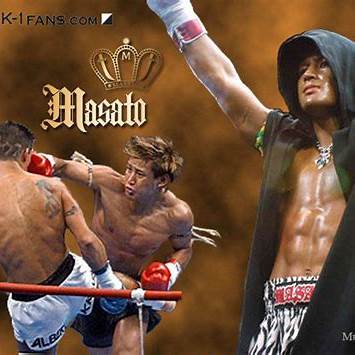What is Japanese kickboxing?

🥋 What Is Japanese Kickboxing?
The Martial Art That Inspired K-1 and Modern Combat Sports
Japanese Kickboxing is a dynamic and powerful martial art that blends the striking precision of karate with the intensity and rhythm of Muay Thai. Born in Japan during the 1960s, it has grown into one of the most influential fighting styles in the world — the foundation of today’s K-1 kickboxing.
Whether you’re a martial arts enthusiast, a traveler exploring Japan’s fight culture, or simply curious about the origins of modern kickboxing, this guide will help you understand what makes Japanese Kickboxing unique.
🥊 Origins of Japanese Kickboxing
The story of Japanese Kickboxing begins in the early 1960s, when Japanese karate practitioners traveled to Thailand to test their skills against Muay Thai fighters. One of them, Tatsuo Yamada, together with boxing promoter Osamu Noguchi, was fascinated by Muay Thai’s efficiency and full-contact nature.
They decided to combine karate’s technique and discipline with Muay Thai’s practical striking and ring format.
In 1966, the first official Japanese Kickboxing matches were held in Tokyo — marking the birth of a new combat sport.
The rules allowed punches, kicks, and knees (but no elbows or prolonged clinch), creating a fast-paced and spectator-friendly martial art.
🧠 Japanese Kickboxing vs. Muay Thai
While Japanese Kickboxing was heavily inspired by Muay Thai, it developed its own distinctive flavor:
| Element | Muay Thai 🇹🇭 | Japanese Kickboxing 🇯🇵 |
|---|---|---|
| Elbows | Allowed | Usually not allowed |
| Clinch | Extended | Limited |
| Knees | Key element | Used but less dominant |
| Focus | Tradition, endurance | Speed, technique, combinations |
| Music | Traditional Thai music | Western-style arena environment |
This blend created a faster, more striking-oriented sport that appealed to international audiences.
🏆 The Rise of K-1
In the 1990s, promoter Kazuyoshi Ishii launched K-1, a new fighting organization that brought together the best stand-up fighters from karate, kickboxing, and Muay Thai backgrounds.
K-1 became a global phenomenon, with legendary fighters like Peter Aerts, Ernesto Hoost, Buakaw Banchamek, and Masato turning Japanese Kickboxing into an international sport.
K-1 rules emphasized:
-
3 rounds of 3 minutes
-
Punches, kicks, and knees allowed
-
No elbows or clinch fighting
Today, when most people say Japanese Kickboxing, they often refer to the K-1 ruleset — fast, explosive, and technical.
💪 Why Train Japanese Kickboxing
Japanese Kickboxing offers an incredible full-body workout that improves:
-
Speed and coordination
-
Cardiovascular endurance
-
Mental focus and discipline
-
Self-defense skills
It’s ideal for both fighters and fitness enthusiasts who love a structured, striking-based sport with deep cultural roots.
Beyond physical conditioning, it reflects the Japanese martial spirit — precision, respect, and continuous improvement.
🧭 Where to Learn Japanese Kickboxing in Japan
If you’re planning a martial arts trip to Japan, you’ll find top-tier gyms across the country:
-
🥊 K-1 Gym Tokyo – Offers authentic K-1 kickboxing training in the heart of the capital.
-
🥋 RISE Gym Shinjuku – Focuses on modern Japanese Kickboxing with high-level coaching.
-
💥 Kickboxing Gym Rise Osaka – Perfect for travelers exploring Kansai region.
Many gyms welcome short-term visitors and even offer trial sessions for beginners — a great way to experience Japanese culture through combat sports.
Want to train in Japan? Click here.
🌏 Japanese Kickboxing and Travel
For martial artists traveling through Asia, Japan is a must-visit destination.
Training in Tokyo or Osaka allows you to experience:
-
Traditional martial arts philosophy
-
The birthplace of K-1
-
Modern gyms with world-class facilities
Combine your workouts with visits to ancient temples, cherry blossom parks, and Japanese cuisine for the ultimate Fight & Travel experience.
🥇 Conclusion
Japanese Kickboxing is more than a fighting style — it’s a cultural bridge between East and West, tradition and modernity.
From its roots in karate and Muay Thai to the rise of K-1, it continues to inspire fighters and travelers around the world.
Whether you’re stepping into the ring or exploring Japan’s martial heritage, Japanese Kickboxing embodies the essence of discipline, respect, and evolution — values that define true martial arts.






